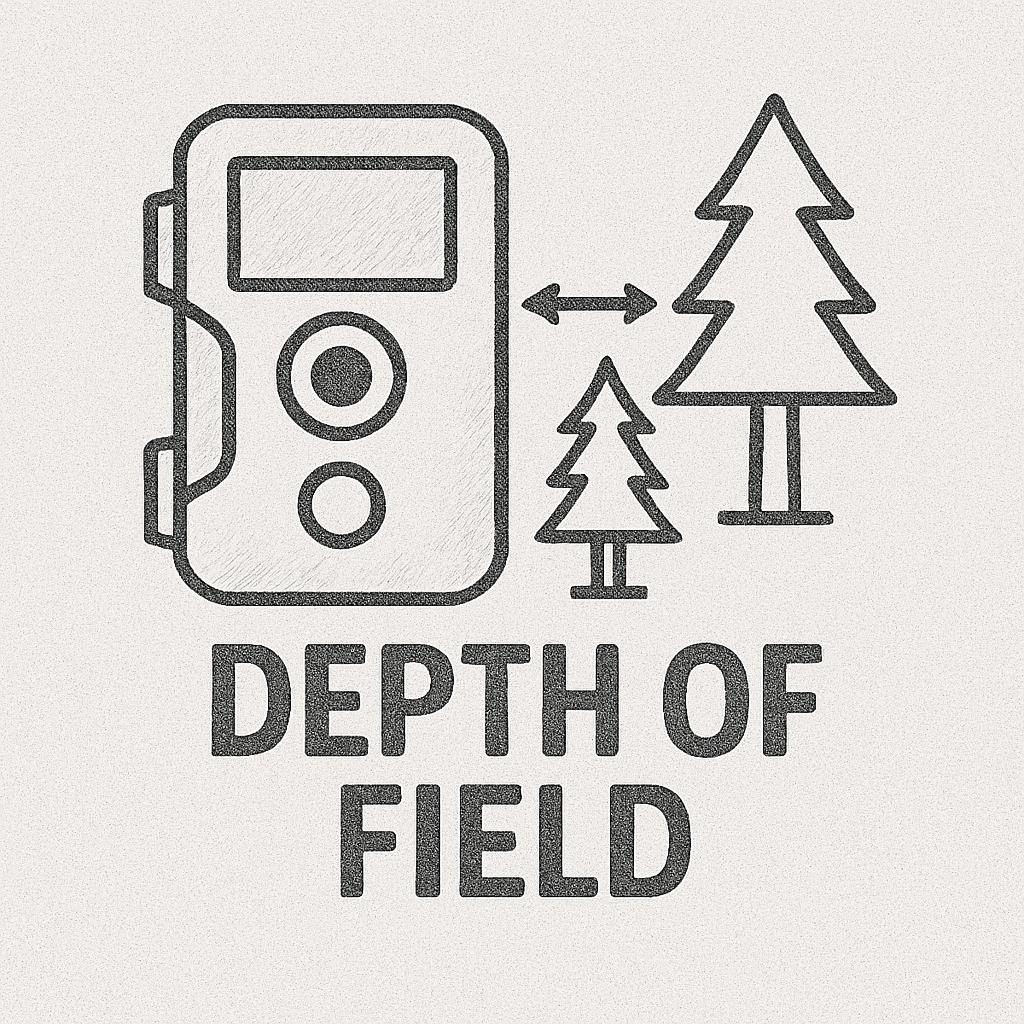Field of View (FOV)
Learn about Field of View (FOV), its importance in optics, how it's calculated, and its applications across photography, trail cameras, gaming, and drones.
Glossary
A measurement that determines the field of view, magnification, and depth of field in cameras, critical for wildlife photography and monitoring.
Focal length is a core technical term in photography and optics, signifying the distance (measured in millimeters) between the optical center of a lens and the camera’s sensor or film plane when the subject is in focus. This crucial parameter determines the field of view (how much of the scene is captured) and magnification (how large or small subjects in the frame appear).
In trail cameras, focal length significantly impacts wildlife monitoring, surveillance, and scene capturing. The choice of focal length influences the ability to focus on distant subjects or convey a broader environmental context.
The field of view directly correlates with the focal length. A short focal length provides a wide-angle perspective, ideal for capturing expansive landscapes or monitoring large areas. Conversely, a long focal length is suited for zooming in on distant wildlife without physically approaching them.
Example Applications:
| Focal Length (mm) | Approximate FOV (Degrees) | Best For |
|---|---|---|
| 2mm | 120° | Monitoring open spaces |
| 4mm | 95° | General wildlife surveillance |
| 10mm | 45° | Close-up monitoring of subjects |
Magnification refers to how “zoomed in” the subjects appear in the frame. Lenses with longer focal lengths (e.g., 100mm or more) magnify distant objects, making them appear closer, while shorter focal lengths (e.g., 4mm) reduce magnification, capturing more of the surrounding area.
Use Cases:
Focal length also affects depth of field, which is the range of distance within a scene that appears sharp. Shorter focal lengths yield a deeper DoF, keeping more of the scene in focus. Longer focal lengths create a shallower DoF, isolating the subject while blurring the background.
Trail cameras often feature fixed focal lengths optimized for specific applications:
| Camera Model | Factory Lens Focal Length | Field of View (Degrees) | Notes |
|---|---|---|---|
| Browning Advantage | 7mm | 43° | Narrow FOV for focused monitoring |
| Browning Elite HP5 | 6mm | 48° | Moderate FOV with minimal distortion |
Replacing factory lenses with alternatives of different focal lengths allows customization:
Sensor size impacts the effective field of view:
TTL measures the lens’s physical dimensions, including any attached components like IR filters. Ensuring compatibility with the camera housing is essential to maintain waterproofing and focus accuracy.
| Camera Model | Maximum TTL (mm) | Notes |
|---|---|---|
| Browning Advantage | 16.2mm | Compact lenses required |
| Browning Elite HP5 | 23.75mm | Supports longer, higher-quality lenses |
Lens aperture (e.g., f/2.0, f/2.8) determines light intake, affecting image quality in low-light conditions. Larger apertures (smaller f-stop values) perform better in dim environments.
| Aperture (f-stop) | Light Gathering Ability | Best For |
|---|---|---|
| f/1.8 | Excellent | Nighttime photography |
| f/2.8 | Adequate | Daytime or well-lit environments |
Wide-angle lenses may introduce barrel distortion, curving straight lines. Lenses with distortion percentages below 2% are optimal for accurate wildlife observation.
Understanding focal length is vital for optimizing trail cameras to achieve desired photographic outcomes. Whether capturing wide-angle environmental shots or detailed close-ups, selecting the right focal length enhances wildlife monitoring success. Experiment with lenses to discover what works best for your unique needs.
Explore lens options and learn how adjusting focal length can optimize your trail camera’s performance.
Focal length is the distance between the optical center of a lens and the camera’s sensor or film plane when the subject is in focus. It determines the field of view and the magnification of the subject.
Shorter focal lengths provide a wider field of view, capturing more of the scene, while longer focal lengths narrow the field of view, magnifying distant subjects.
In trail cameras, focal length determines the lens's field of view, magnification, and depth of field, which are essential for capturing wildlife or monitoring specific areas.
Yes, many trail cameras allow for lens replacement. By choosing a different focal length, you can adjust the field of view and magnification to suit your specific needs.
Wide-angle lenses capture a larger field of view but can introduce barrel distortion and reduce detail for distant subjects.
Learn about Field of View (FOV), its importance in optics, how it's calculated, and its applications across photography, trail cameras, gaming, and drones.
Discover what a wide-angle lens is, its uses in photography genres like landscape and architecture, and its technical details including focal lengths, field of view, and depth of field.

Understand Depth of Field (DoF) in photography, including its definition, influencing factors, use cases, and tips for achieving creative effects with shallow and deep focus.